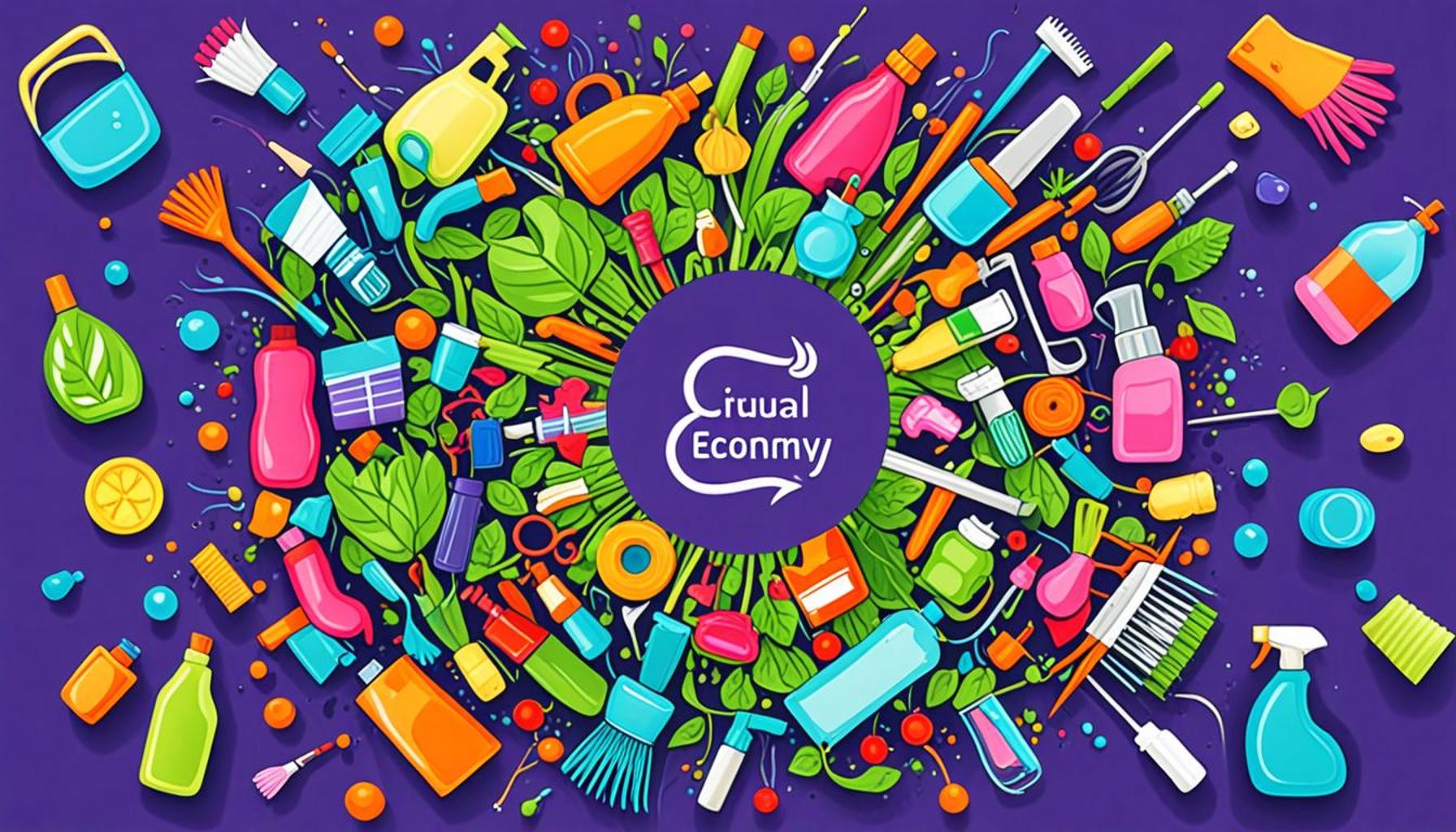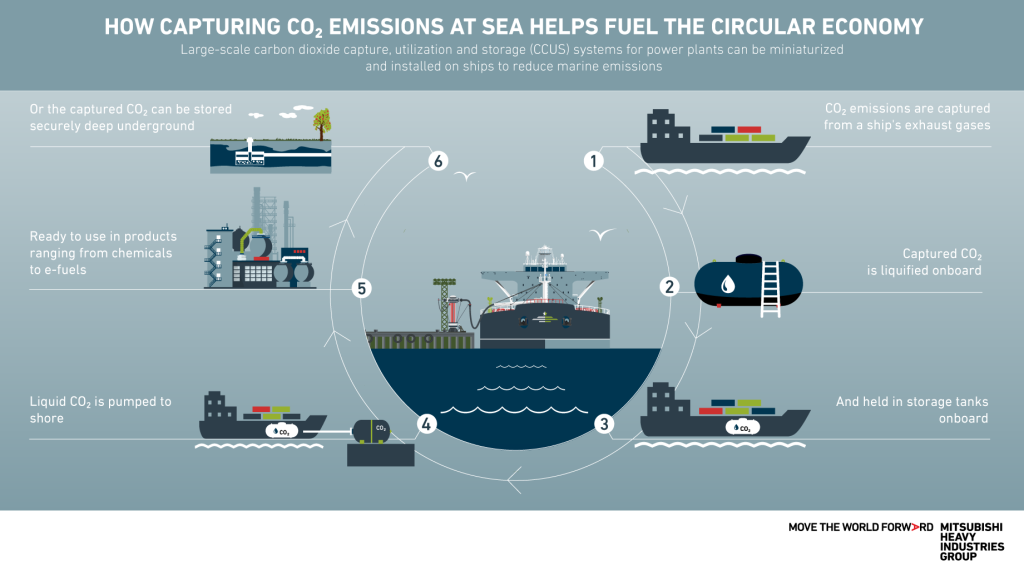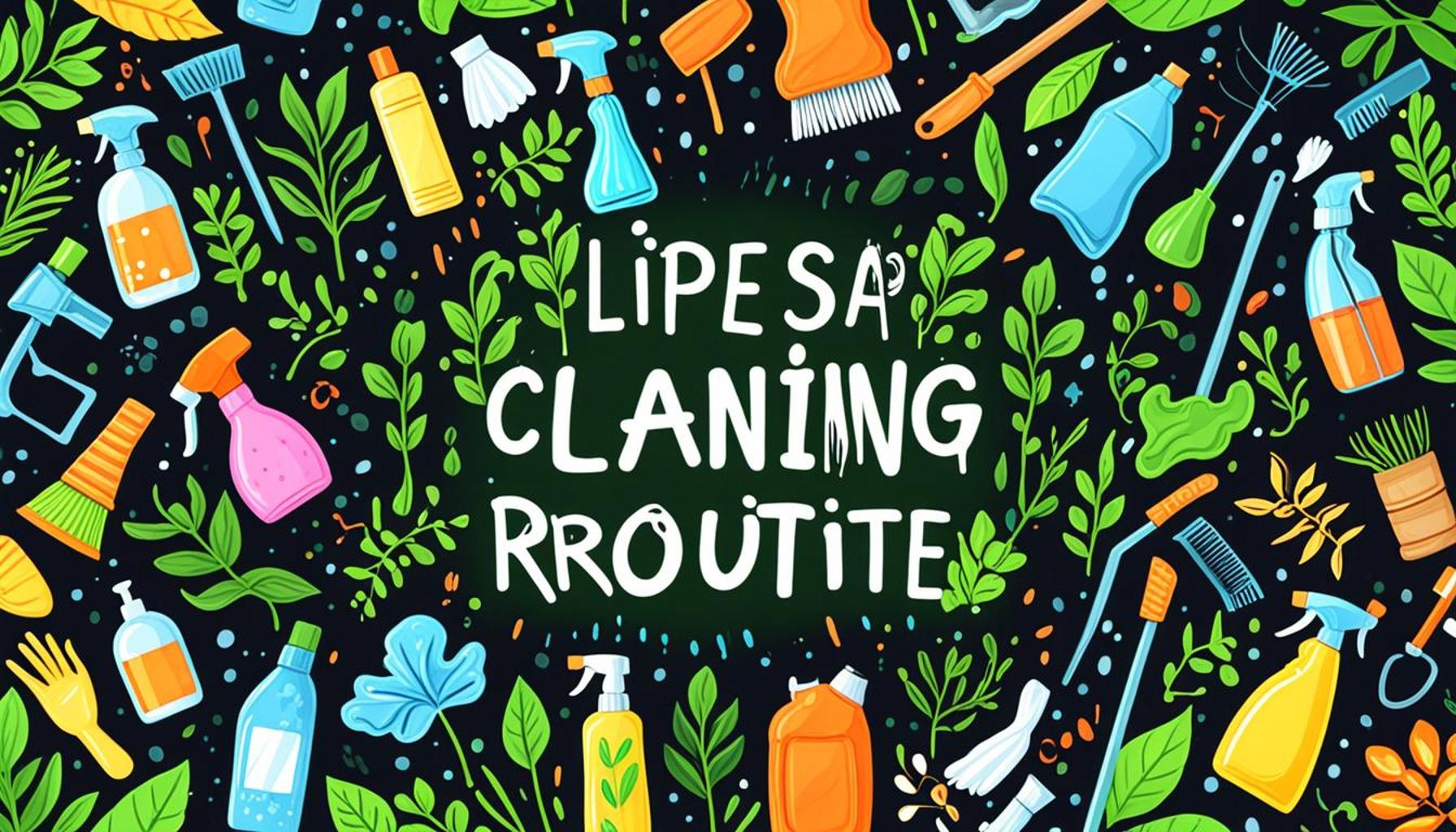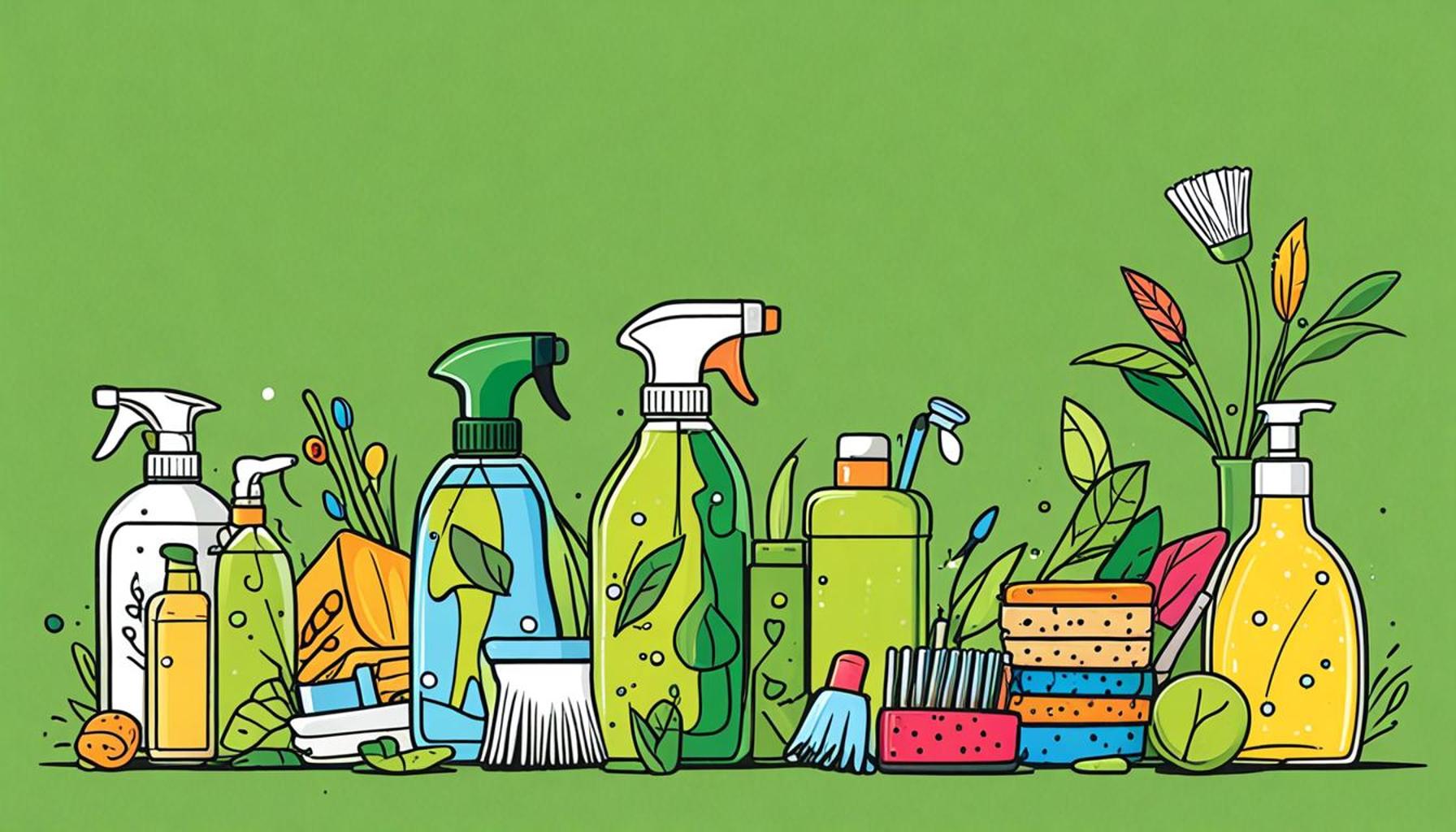How the Circular Economy is Influencing the Sustainable Cleaning Products Industry

A Transformative Approach to Cleaning Practices
The sustainable cleaning products industry is currently experiencing a profound transformation, largely fueled by the tenets of the circular economy. This forward-thinking strategy focuses on minimizing waste and extending the lifecycle of materials, fundamentally altering the way products are not only manufactured but also utilized and disposed of. As society becomes increasingly aware of environmental issues, the necessity for sustainable products grows stronger.
Key aspects of the circular economy that are significantly influencing this industry encompass several crucial principles:
- Resource Efficiency: By harnessing renewable resources, manufacturers can significantly minimize their environmental footprint. For instance, companies are increasingly utilizing bio-based materials derived from plants, such as coconut oil and corn-derived ethanol, in cleaning formulations. These alternatives help mitigate the depletion of finite resources, allowing for a more balanced ecological approach.
- Biodegradability: Many modern cleaning products are meticulously engineered to decompose naturally in the environment. This innovation is pivotal in addressing the concern of accumulating waste in landfills. For example, brands like Seventh Generation are formulating products that break down into harmless compounds, ensuring they leave no toxic legacy behind.
- Waste Reduction: The shift in business models emphasizes the necessity of reusing and recycling materials instead of succumbing to traditional waste generation. Companies are creating take-back programs where consumers can return used containers for recycling, presenting a new lifecycle path for otherwise disposable materials.
As consumers grow more ecologically conscious, their demand for transparency and commitment to sustainable practices has never been higher. In response to this emergent trend, manufacturers are innovating with a variety of strategies:
- Eco-friendly ingredients: Cleaning solutions that are non-toxic and plant-based resonate strongly with health-conscious consumers. Brands like Mrs. Meyer’s have garnered popularity by employing essential oils and botanical extracts, avoiding harmful chemicals that can pose risks to health and the environment.
- Refillable packaging: In efforts to combat the pervasive issue of plastic waste, many companies are designing their products with refillable packaging options. This not only significantly reduces single-use plastic but also promotes a culture of reusability among consumers.
- Energy-efficient production methods: Efficient manufacturing techniques are crucial in minimizing a brand’s carbon footprint. Techniques such as using renewable energy sources and optimizing production processes are gaining traction, demonstrating a commitment to sustainability.
The ongoing shift towards a circular economy does not merely represent a passing trend but instead signals a critical response to urgent environmental challenges facing our world today. Exploring these principles reveals a broader understanding of sustainability within the cleaning products industry, encouraging consumers to make conscious choices that align with their values. It is essential for potential buyers to investigate not only the products they use but also the practices of the brands they support, ultimately contributing to a greener and more sustainable future.
DON’T MISS: Click here to discover quick cleaning tips

Innovative Practices Fueling Sustainable Development
The intersection of the circular economy and the sustainable cleaning products industry opens a fascinating dialogue about how commercial practices can evolve in response to environmental imperatives. This alignment not only benefits the planet but also enhances brand loyalty among eco-conscious consumers. As awareness of sustainability rises within the U.S. population, companies are increasingly adopting innovative practices that reflect a commitment to circular principles.
One of the most significant influencers of the sustainable cleaning products industry is the transition to renewable materials. Traditional cleaning products often rely on petrochemicals, which impose heavy burdens on the environment through extraction processes and waste disposal. In contrast, leading brands are reformulating their products with bio-based ingredients sourced from renewable agricultural outputs. This not only lowers their dependence on fossil fuels but also contributes to a less hazardous impact on ecosystems. For instance, large companies like Unilever have committed to sourcing all of their agricultural raw materials sustainably by 2025, setting a benchmark for others in the sector.
In tandem with embracing renewable resources, there is a marked shift towards transparent labeling. As consumers become savvier about ingredients and their long-term effects, brands are compelled to disclose details about what goes into their products. This transparency not only builds trust but also empowers consumers to make informed choices that align with their values. Surveys reveal that around 73% of U.S. consumers favor companies that prioritize making their ingredient lists publicly accessible—a practice that encourages more ethical consumer behavior.
Moreover, environmental responsibility extends beyond product ingredients to the very packaging itself. Innovative packaging solutions are gaining traction, particularly in a market increasingly wary of plastic waste. Many brands are now utilizing post-consumer recycled (PCR) materials for their containers. For instance, brands like Method and Ecover are not only producing cleaning products that are effective and safe but also innovating their packaging to minimize environmental impact. This has resulted in a significant reduction of plastic waste and a shift in consumer perception, leading them to opt for brands that prioritize sustainability.
The impact of the circular economy is not limited to product formulation and packaging; it also encompasses the broader supply chain. Efficient logistics and distribution methods play an essential role in minimizing a brand’s carbon footprint. Companies are increasingly exploring consolidated shipping practices, localized production facilities, and energy-efficient transport options to streamline distribution channels. They aim to reduce emissions associated with transportation while ensuring products are readily available to consumers.
In summary, the integration of circular economy principles within the sustainable cleaning products industry illustrates a transformative journey toward environmental stewardship and social responsibility. As brands innovate and consumers demand more sustainable options, this evolution encourages a broader movement toward greener practices across the globe. Staying informed about these advancements can empower consumers to make choices that not only enhance their living environments but also contribute to the overall health of the planet.
Understanding the Circular Economy in Cleaning Products
The concept of the circular economy is reshaping various industries, particularly the sustainable cleaning products sector. Instead of the traditional linear model of “take, make, dispose,” the circular economy emphasizes a restorative approach where resources are reused, recycled, or repurposed. This shift is not just a trend; it’s a necessary evolution in response to environmental challenges and consumer demand for sustainability.
Impact on Product Design
In the circular economy, product design plays a crucial role. Manufacturers are now focusing on creating cleaning products with fewer harmful chemicals, using biodegradable and recyclable packaging. By employing innovative materials that are both effective and eco-friendly, companies are aligning themselves with consumer preferences for sustainable options. For instance, brands are increasingly utilizing plant-based ingredients and reducing water usage in their formulations, fundamentally changing the market landscape.
Consumer Engagement and Responsibility
Moreover, consumers are becoming more engaged in the sustainability narrative. The rise of eco-conscious consumers fosters a culture of accountability among brands. As businesses respond to this demand, they are establishing take-back programs that encourage recycling and promote a closed-loop system. For example, companies that allow customers to return used product containers not only reduce waste but also create brand loyalty by appealing to responsible consumer behavior.
Economic Benefits
The financial implications of adopting circular practices are significant. By optimizing resource use and minimizing waste, companies can achieve cost savings over time. Furthermore, with the growing market for sustainable products, businesses are tapping into new customer segments willing to pay a premium for eco-friendly options. Thus, the transition towards a circular economy is not merely an ethical choice but a savvy business strategy as well.
| Advantages | Impact on Industry |
|---|---|
| Reduced Environmental Impact | Minimizing waste and chemical pollution enhances brand reputation. |
| Cost Savings | Efficient resource management leads to lower production costs. |
As we continue to explore the connection between the circular economy and sustainable cleaning products, the evolution of both consumer habits and manufacturer strategies becomes ever more evident. This transformative approach not only aligns with environmental goals but also caters to the collective aspiration for a more sustainable future.
DIVE DEEPER: Click here for essential eco-friendly cleaning checklists
Consumer Engagement and Behavior Shifts
The influence of the circular economy on the sustainable cleaning products industry extends well beyond production and packaging intricacies; it significantly shapes consumer engagement and behavior. As sustainability becomes a focal point for modern consumers, their expectations are prompting brands to evolve not only in what they offer but also in how they communicate and interact with their audience.
One of the most compelling trends is the rise of participatory consumption, where consumers are not just passive purchasers but active participants in sustainability efforts. Brands are creating closed-loop programs that invite customers to return empty containers for recycling or refilling. Companies like Blueland have successfully capitalized on this concept by offering a cleaning solution that users can refill with water, reducing the demand for single-use plastic packaging. Such innovative approaches resonate strongly with environmentally-conscious consumers, fostering a sense of community around shared sustainability goals.
Another notable shift is reflected in the growing emphasis on eco-labels. The introduction of certifications like Green Seal, EPA Safer Choice, and Cradle to Cradle has allowed consumers to make informed choices more easily. According to recent market research, nearly 70% of American shoppers reportedly consider certifications essential in their product selection process. Brands that prioritize these eco-labels are discovering not only a competitive edge but also the ability to connect deeply with a market that increasingly prioritizes ethical production.
Moreover, brands are leveraging social media platforms to engage with consumers directly, educate them about their choices, and inspire eco-friendly behavior. Campaigns that highlight the environmental impacts of traditional cleaning products versus sustainable alternatives are gaining traction. Platforms like Instagram and TikTok are filled with influencers advocating for eco-conscious products, contributing to a broader movement that underlines the need for sustainability in everyday choices. This trend illustrates a broader cultural shift that places immense value on consumer empowerment and responsibility.
Technological Integration and Data-Driven Decisions
Additionally, the incorporation of technology in the sustainable cleaning products industry is redefining not only how products are made but also how companies interact with their customers. Brands are analyzing data to gain insights into consumer preferences, which allow for personalized marketing efforts and product recommendations that align with individual values. The utilization of Artificial Intelligence (AI) and machine learning can optimize ingredient selection, ensuring that cleaning products are not only effective but also have minimal environmental impact.
This trend is further augmented by advances in biodegradable alternatives. Companies are investing in research and development to create cleaning agents that break down more efficiently in the environment, reducing pollution and enhancing soil health. For instance, scientists are exploring various plant-based solutions and enzymes to develop biodegradable surfactants that maintain efficacy while minimizing environmental footprint. This dedication to innovation is essential for brands that seek to remain compliant with emerging regulations while appealing to a growing demographic of eco-aware consumers.
As disposable resources dwindle and environmental crises loom larger, the pressures for brands to adapt to circular economy principles will only intensify. This not only challenges businesses to rethink how they create and sell products but also pushes consumers towards more sustainable practices as they lean into their role as advocates for a healthier planet. By understanding the dynamics of consumer behavior alongside the stewardship of resources, the sustainable cleaning products industry is indeed navigating a transformative journey that embraces the tenets of the circular economy.
DIVE DEEPER: Click here for effective cleaning tips
Conclusion
The circular economy is not merely a trend; it represents a fundamental shift in how the sustainable cleaning products industry operates, influencing everything from product design to consumer behavior. As businesses recognize the need to adapt, they are embracing closed-loop systems that prioritize reuse, recycling, and the use of biodegradable materials. This commitment not only responds to consumer demands for environmentally-friendly options but also highlights the evolving landscape of ethical consumption.
Furthermore, the integration of technology in production processes is enhancing the industry’s capacity to create solutions that align with sustainability goals. Data-driven decisions are empowering brands to better understand consumer needs, enabling tailored marketing efforts that resonate with a more informed audience. This data-focused approach shifts the narrative from mere product consumption to a broader conversation about responsibility and stewardship.
As we witness a rise in participatory consumption, it’s clear that consumers are no longer passive participants but active advocates for change. With the trend of eco-labels and increased transparency, shoppers are equipped to make choices that reflect their values, amplifying the collective demand for sustainable practices.
Ultimately, the intersection of the circular economy and the sustainable cleaning products industry illuminates a promising path toward a greener future. For consumers and companies alike, fostering a culture that values sustainability will lead to innovative breakthroughs and significant reductions in environmental impact. As we advance, the question remains: how will you contribute to this vital movement in your everyday life?


